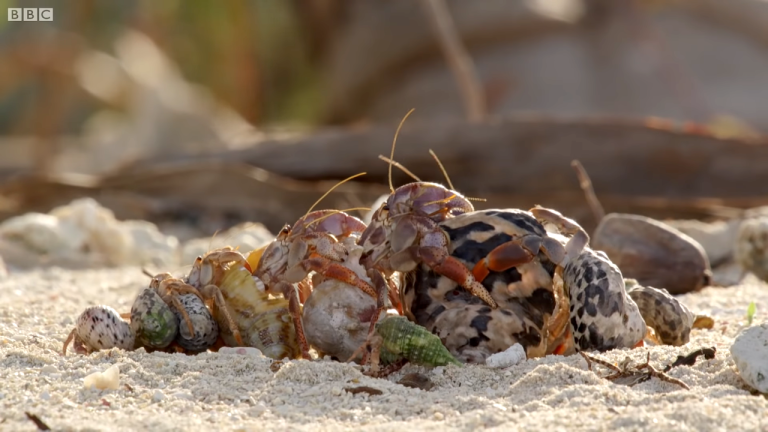
Hey! This week I’d like to take a minute to talk about Hermit Crabs! It’s no secret that crabs are super varied, and there are more incredible species with weird traits than I can count. Of these, I feel that the hermit crab is the most popular. While many crab species, such as decorator crabs, will collect bits of their environment to use as protection and camouflage, the hermit crab takes this to the next level by evolving hindquarters designed specifically to hold onto discarded snail shells! With their soft back-ends covered by the shell and their hard claws and legs guarding the only entrance, hermit crabs make it hard for most predators to eat them.
It is interesting to think about, though: how could an animal have evolved in such a way? Obviously these crabs and the snails they depend on have lived in the same environment for a very long time, but how did the hermit crab’s ancestors look during the transition to such a specialized form? maybe they had plated rear ends, but those with soft, flexible ones had an easier time securing homes.
Hermit crabs don’t just stop at a shell, though: Many species have symbiotic relationships with sea anemones, and will place them on their shells for added defense. Sea anemones are notoriously difficult to safely dislodge, but hermit crabs instinctively know just how to coax them free and add them to their shells. In fact, hermit crabs will even remove their anemone buddies from their old shells and move them to their new shells when moving up! In return for protection, the anemones get to feed on the scraps of whatever the hermit crab is eating.
Hermit crabs aren’t just friendly with sea anemones, though: they also help each other out. When a hermit crab that’s grown too big for its shell comes across a bigger one, it will size it up. If it’s just right, the hermit crab will move in in just a few seconds, careful to not be vulnerable for too long. What happens more often than not, though, is that the shell is to big: In this case, the hermit crab will sit and wait. Eventually, more hermit crabs will show up looking for a new home. After a while, an entire line of hermit crabs will have formed, all in descending size. When the conditions are just right, they will all exchange shells quickly, each with a new home that’s just right.

That’s all for this week! I hope you enjoyed these tidbits about everybody’s favorite aquatic homebody!